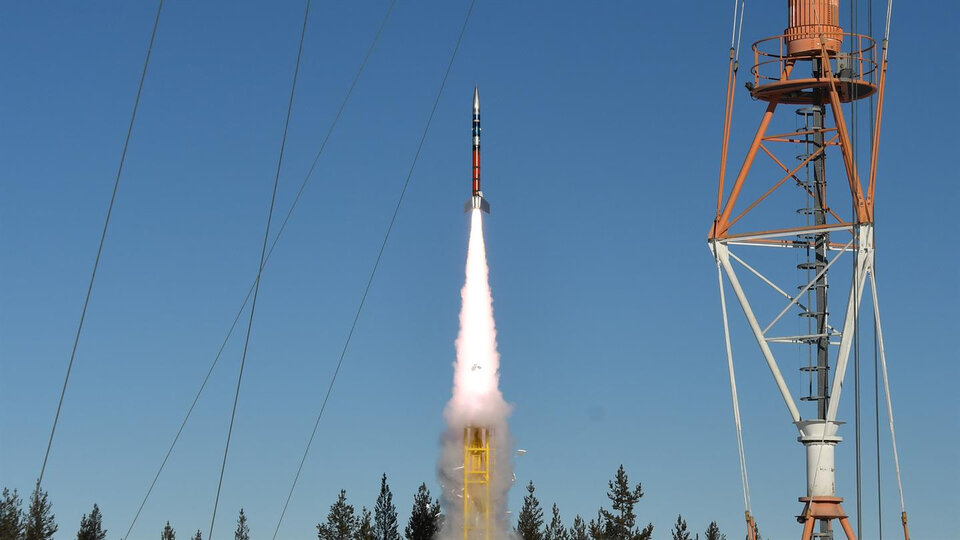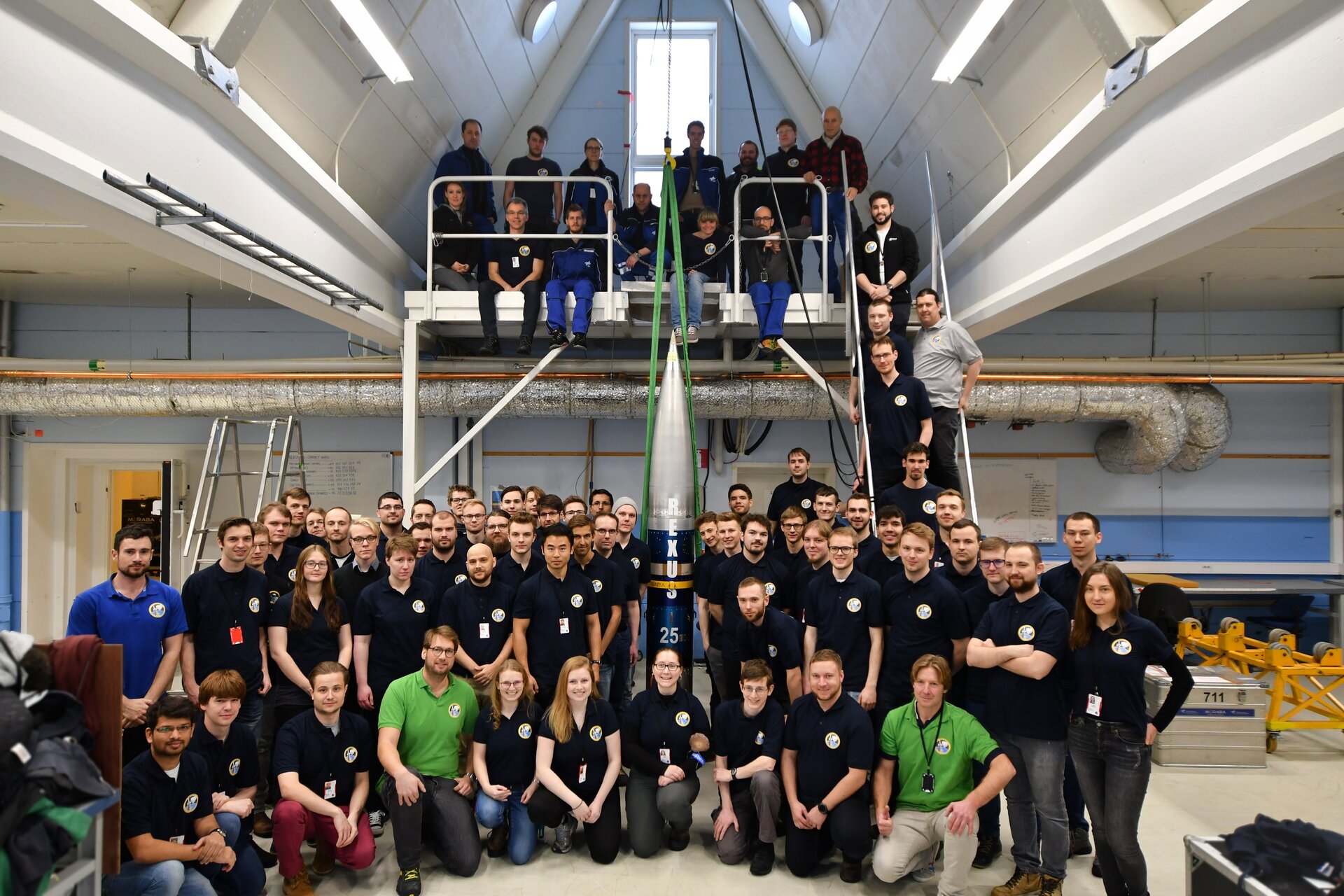3, 2, 1…Lift-off for REXUS 26
The Esrange Space Centre’s PA system called out across the frozen Swedish forest, marking the start of a journey to the edge of space for four intrepid student experiments!
The launch of REXUS 26 marks the 3rd launch in a triple-rocket campaign, following its sister rocker, REXUS 25, and REXUS 23 at the start of the campaign.
The REXUS 25 and 26 student teams were selected to participate in the programme in December 2017 and since then have followed a full-space project life-cycle, including a series of project reviews and integrated testing, culminating in the launch event from SSC’s Esrange Space in Northern Sweden.
REXUS 25 was launched on Monday the 11th of March, and reached an apogee of approximately 80km, before returning to earth with a parachute and landing around 46km from Esrange. The sounding rocket accommodated five student designed and built experiments, two of which were sponsored by the ESA Education office:
PR3 (Payload for Radiation measurement and Radio-interferometry in Rockets) from Eindhoven University of Technology & Radboud University of Nijmegen in the Netherlands. Whose goal was twofold: firstly to demonstrate the feasibility of using radio-interferometry to track to location and orientation of REXUS in flight and, secondly, is to use commercially available off-the-shelf camera modules to measure radiation during flight. The team report initial excellent results.
HEDGEHOG (High-quality Experiment Dedicated to microGravity Exploration, Heat flow and Oscillation measurement from Gdańsk) from Gdańsk University of Technology in Poland. This experiment focused on measuring acceleration and vibrations (especially eigenfrequencies) conditions and heat transfer inside the rocket as a reference for future ground acceptance tests. It featured a patented device for heat flux measurement and set of cantilever beams for vibration amplification.

PR3and HEDGEHOG shared their space-flight with three DLR sponsored teams:
- FLOMESS (Flight Loading Measurement System) from Universität der Bundeswehr München,
- FORAREX (FORAminifera Rocket EXperiment) from Universität Bremen and
- GAME (Glider for Atmospheric Measurements and Experiments) from Ernst-Abbe-Hochschule Jena.
The campaign continued for several days after the launch of REXUS 25, while critical rocket systems were refurbished and the REXUS 26 teams prepared their experiments for flight. REXUS 26 was eventually launched on the 19th of March and reached an apogee of 82km.
On board REXUS 26 were another four student experiments, two sponsored and supported by the Education Office:
- TRACZ (Testing Robotic Applications for Catching in Zero-g) from Wrocław University of Science and Technology in Poland. Which aimed to investigate the possibility of application of a gripper based on the jamming of the granular material in space, where negative differential pressure is impossible to obtain and lack of gravitation may cause the granular substance inside the gripper to behave in an npredictable manner.
- PRIME (Plasma measuRements wIth Micro Experiment) from the Royal Institute of Technology in Sweden. Whose objective was to demonstrate a miniaturised scientific payload for plasma measurements in the lower ionosphere consisting of two Free Falling Units (FFU) payloads were ejected from the rocket. These FFUS were designed to measure electron plasma current to deduce plasma parameters at the sub-meter scale. These measurements will be validated against incoherent radar scatter data (EISCAT) and models.

The German sponsored team sharing their rocket flight were:
- ELVIS (Exploration of Low-Velocity collisions In Saturn’s rings) from Technische Universität Braunschweig
- TUPEX-6 (TU Berlin Picosatellite Experiment-6) from Technische Universität Berlin.
Also participating in the campaign was the ESA supported BESPIN (Balloon Ejection Student Prototype Investigation) team from Luleå University of Technology also in Sweden. Whose initial aim was to is to design and test an engineering solution for deploying a balloon during atmospheric decent. REXUS 26 was intended to offer a stepping stone to the final solution, and did not include the balloon deployment, but would rather test a number of other support systems. Due to unsurmountable technical issues the BESPIN experiment was removed from the payload a few days before the flight, however the team and the experiment were able to participate in the full campaign including many of the pre-flight tests.
Now that all experiments are recovered the next step for the teams is to carefully analyses their results, and prepare the final version of the Student Experiment Document.
All teams have also been invited to present their results at the biannual ESA Symposium on Sounding Rockets and Stratospheric Balloons and Related Research (ESA PAC), the 24th of edition of which will take place in Essen, Germany, between the 18-20th of June 2019.
Congratulations to all teams on the REXUS 23/25/26 campaign!


